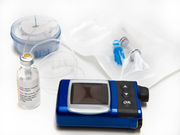Findings for patients with remaining endogenous β-cell function after 10 or more years of T1DM
FRIDAY, June 30, 2017 (HealthDay News) — Patients with remaining endogenous β-cell function after a decade of living with type 1 diabetes tend to have much higher levels of interleukin-35 (IL-35) than other patients with long-standing type 1 diabetes, according to a study published in the June issue of Diabetes Care.
Daniel Espes, M.D., of Uppsala University in Sweden, and colleagues reached their conclusions after studying 113 patients with type 1 diabetes. The disease duration of participating patients was 10 or more years.
The investigators found that approximately 40 percent of patients with type 1 diabetes and 10 or more years disease duration had measurable fasting C-peptide concentrations. The team also found that blood plasma IL-35 concentrations were noted to be twice as high in the patients with remaining C-peptide.
“Patients with remaining endogenous β-cell function after >10 years duration of type 1 diabetes differ immunologically from other patients with long-standing type 1 diabetes,” the authors conclude. “In particular, they have a much higher IL-35 production.”
Copyright © 2017 HealthDay. All rights reserved.








